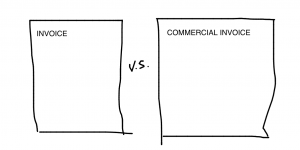A Brief History of Customs
In an increasingly globalized world, it can be difficult to understand the behaviour or even the purpose of Customs agencies. What gave rise to such an institution, and why are its laws so complex? Perhaps the best way to understand the motivations of today’s federal agencies is to examine the history of Customs itself.
Although we tend to think of globalization as a modern phenomenon; the hallmarks of its activity, from free trade zones to duty rates, have been around for millennia. Evidence of Customs activity has been excavated all over the world, from the ports of Ancient Greece to the Great Wall of China.
The evidence suggests that complex systems of controls and taxes on traded commodities were in existence well before industrialization, as well as the reasoning behind them. It was easy to see among small populations that unmitigated dependence on foreign merchandise would in-debt and stress the community.
Scholars believe that the earliest Customs fees were actually voluntary, and offered by travelling merchants as a bribe to sovereigns for considerate treatment. Over time, this bribe became mandatory. It was called ‘duty,’ a fee charged for the privilege of trading in a particular kingdom. The collection itself was outsourced to tax farmers, who would use any means necessary–including violence–to obtain what had become an essential revenue source for monarchies.
The first written Customs tariff was developed in Palmyra (present day Syria) and was engraved in stone (its still there!). Despite its age, the ancient tariff bears a striking resemblance to the modern harmonized system, and included specific duty rates for commodities such as camels, slaves, fleece, and aromatic oils.
| Customs Tariff of Palmyra (est. 167 AD) |
|
| Canada Customs Tariff (2016) | ||||||||||
|
Ancient Rome introduced professional customs offices and officers. Similarly to Palmyra’s tariff wall, trade information found on artifacts (imported jars of olive oil) contained inscriptions nearly identical to modern Customs declarations.
| Roman-era Customs data | Canada Customs Invoice (current) |
|
|
A newer concept of Customs as a complex, evolving filter began at the dawn of the industrial age when nations promoted exporting as a powerful tool for national wealth. As trade increased, so did competition, and streams of legislation became a necessity to balance the needs of domestic labour with market forces. Countervailing duty was charged against subsidized products, and anti-dumping duty against unsold surplus. Unbridled attempts to push exports led to a series of trade wars that halted shipping and resulted in economic crashes, revealing the dangers of protectionism. Following the wars, international organizations were established, and an era of (somewhat) transparent cooperation continues to this day.
Despite major advances, the essence of Customs has neither disappeared nor changed. While today’s agencies screen for a variety of novel threats, from security to the environment, protecting the local market is the motivation behind every decision, even if it is not always clear to the importer.
Sources:
SJ de Leat: Portorium (1975)
Hironori Asakura, World History of the Customs and Tariffs (2003)
Douglas A. Irwin, Against the Tide (1996)



